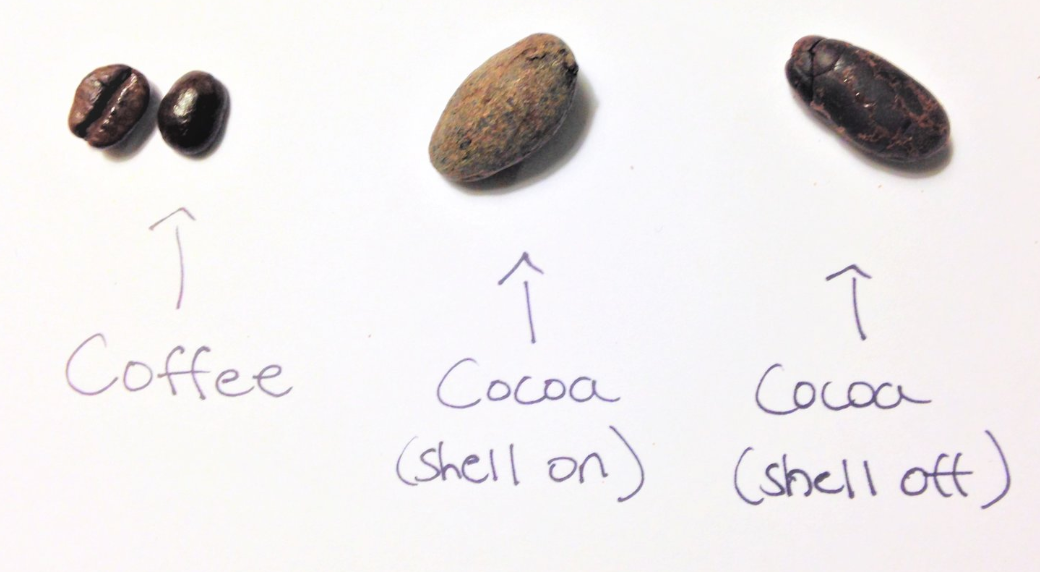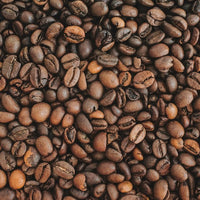Both cocoa and cacao start with the “beans” (they’re technically seeds) from a tropical evergreen tree native to South America. Both can be ground to form a powder used to make chocolate bars, hot cocoa, and other seemingly addictive treats. Even chocolatiers (a cool way of saying chocolate makers) who deal with the beans regularly and the academics who write journal articles about chocolate tend to use the words interchangeably.
Yet the two are very different from each other. So if you are justifying your chocolate cravings on the basis of chocolate’s reported health benefits, that difference can be important.
Those seeds come from the pods of the Theobroma cacao tree—which in greek means, “food of the gods”. A name we agree with. These pods that hold the seeds have been cultivated in the New World for over 5,000 years. Although it wasn’t until around 1400 BCE that natives started processing the beans in ways to make them more palatable.

How Are They Made?
The cacao beans are first fermented and then dried. What happens next makes the difference between cacao and cocoa. For the latter, the beans are then roasted, much like coffee beans, their hulls removed, and what’s left—called cacao nibs—ground into a non-alcoholic “liquor”. After most of the fat is removed from the liquor, what is left is cocoa powder, the stuff you make hot chocolate with.
Cacao powder follows a similar path, except that the beans skip the roasting step. The resulting product, available mostly on the Internet and at natural food stores next to other funky powders, is a little less brown, a bit more acidic and bitter. For the most part, the two can be used interchangeably, though in baking cacao powder will need a bit more liquid, and cocoa powder may call for leavening with baking powder rather than baking soda because of cocoa’s lower acidity.
Why Does This Matter?
The roasting to form cocoa powder destroys as much as 60 percent of cacao’s antioxidants, the phytochemicals mostly responsible for chocolate’s beneficial properties.

Chocolate’s current reputation as a potential “super food” was not always so recognized. In fact, as proselyting Spaniards moved into South America, it was viewed in some circles with considerable suspicion, probably because of the role it played in the “pagan” Aztec religious ceremonies. Some claimed that it sapped the energy of its devotees and made them age more quickly while others, most notably ladies of high station, drank it in church, avowing that it prevented fainting during long religious ceremonies. For a period, the Catholic church forbade its nuns (but not its priests!) serving as missionaries in South America from drinking chocolate (at that time an unsweetened beverage) because it was thought to inflame the passions. Which may be a bit too unholy considering its divine name.
But as so often happens, clues to the modern nutritional science of cacao arose from observing the people who normally consumed it. For instance, the Kuna Indians who live on islands off the Panama coast were found to have very low instances of high blood pressure and that blood pressure did not increase as they aged as it normally does in most industrialized countries. But when the Indians moved to urban environments, that advantage was lost. One difference: in the islands the natives consumed lots of cacao drinks, a healthy habit lost when they migrated to the city.
And in a continuing series of studies that looked at diets and health across populations in seven countries (including the United States), chocolate consumption was strongly linked to a reduced risk of stroke, coronary artery disease, and heart disease in general. What’s more, for those studies that followed populations long enough, there was a reduction in “all-cause mortality.” Meaning you live longer, thanks cacao.
These favorable results were echoed in numerous other population studies, including the highly regarded 16-year Iowa Women’s Health Study, the Zutphen Elderly Study, and a reanalysis of the European Prospective Investigation, to name a few.
That’s good news for chocoholics, but what’s going on? After all, virtually every week we hear that this food or that is the new superfood that promises, if not immortality, at least longer, healthier life.
What's So Special About Cacao and Cocoa?
Chocolate contains over 300 chemicals that may have effects on human health, but the main nutritional actors in chocolate are antioxidants, compounds that reduce destructive free radicals in the body. Those free radicals are like high energy bullets that can wreak havoc with DNA, oxidize cholesterol to form artery-clogging plaque, and the worst of them all, contribute to wrinkles.
Of course, lots of foods cited for their health benefits are rich in antioxidants, including black tea, green tea, blueberries, acacia berries, and red wine, among many others. But cocoa and especially cacao boast much higher levels of many of those antioxidants than these other super foods (although, because the mix of antioxidants differ from food to food, all of them can play a beneficial role).
The main antioxidants in the chocolate family are called flavanols, and if you remember any of your high school chemistry, these belong to a class of compounds called polyphenols, benzene rings with at least one oxygen-hydrogen (OH) group attached.
But these antioxidants are multi-talented. They don’t just zap damaging free radicals. They also can have anti-inflammatory and anti-platelet aggregation effects which can keep your arteries from clogging, improving what doctors call “vascular function.” Further, they appear to increase the production and availability of a gas called nitric oxide (chemical formula: NO), which was named Molecule of the Year in 1992 (yes, there is a Molecule of the Year) for its importance in biological processes.
More to the point here, nitric oxide relaxes the smooth muscle tissue of the circulatory system, making blood vessels more flexible, reducing blood pressure and lowering the probability of stroke and kidney disease amongst other serious maladies. (That famous little blue pill, Viagra, also works on the body’s nitric oxide pathway—though by a different mechanism—increasing blood flow to the area the gods deem unholy)
There are also more limited studies suggesting that the flavanol epicatechin in cacao beans can help those with diabetes and pre-diabetes reduce their insulin resistance and regulate insulin and glucose levels (though a sugar-laden chocolate bar may not be the preferred mode of introduction). Cacao is also rich in the magnesium (one ounce has 16% of your recommended daily intake), a mineral which has been linked both to a reduced incidence of diabetes and maybe heart disease.
All that is a plus, but let’s be honest. Most of us don’t eat or drink chocolate as medicine, nor should we. We like chocolate because it tastes good, and eating it makes us feel good. And that’s where more of the cacao bean’s remarkable biochemistry may come into play.
Another of the many chemicals found in cacao is phenethylamine (PEA), a neurotransmitter distantly related to speed, that releases norepinephrine and dopamine, which can make you feel happy and elevate your mood. PEA is produced during the fermentation of the beans and works along with anandamide, a neurotransmitter that in Sanskrit means joy, bliss, delight.
One thing that is not in cacao to any large extent, however, is caffeine. A one-ounce serving of milk chocolate (but who can stop with one ounce?) contains only about 6 mg of caffeine while a cup of hot chocolate made from a packaged hot chocolate mix (like Swiss Miss) has about 5 mg of caffeine. For comparison, a cup of brewed coffee ranges from about 100 to 150 mg of caffeine.
The alkaloid that cacao does contain is theobromine, which contains no bromine but is actually caffeine minus an extra methyl group (CH3). In fact, in the body caffeine is metabolized, knocking off that extra methyl to form theobromine. You would be cutting out the middle man essentially. While theobromine is harmful to both cats and dogs (don’t feed Fido or Miss Meow chocolate), at the levels found in cacao it is a mild mood enhancer for the likes of the rest of us. Theobromine is also the main alkaloid found in tea, though there its effects are balanced by the amino acid L-theanine which reduces stress and induces relaxation.
Nutritionists stress that there are no super foods, but if there were, cacao would likely be high on the list. So maybe reach for the cacao covered acai berries instead of the carton of chocolate ice cream.




